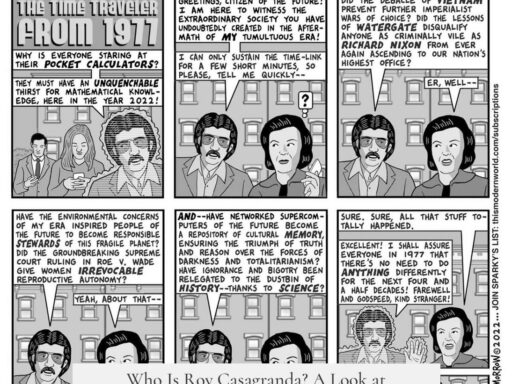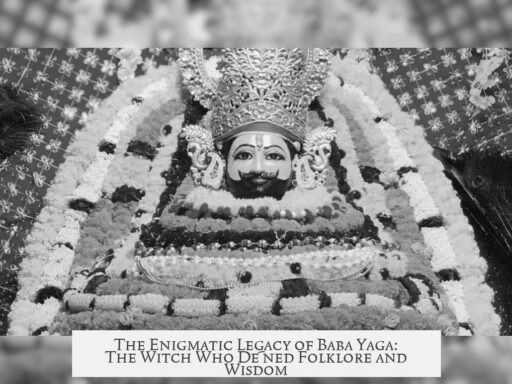The “dragon banner” shown in the Netflix film “Outlaw King” has a historical basis but differs significantly from the movie’s depiction. Historically, the “dragon banner” was a windsock-shaped standard known as the Roman draco, used by English and later Plantagenet kings as a symbol of war, especially wars fought without mercy against rebels and enemies.
The banner was not a simple black flag with a red dragon as depicted in the film. Instead, it consisted of a metal head with an open mouth and flowing red fabric attached behind it. When held against the wind, the fabric inflated and whipped, creating a dynamic, serpent-like effect. This style of banner originated from the Roman military and was adapted by Anglo-Saxon and later Plantagenet rulers.
Anglo-Saxon kings first used the dragon banner as a royal standard. Records show its presence in battles dating back to 752 by the King of Wessex, again in 1016 against Cnut, and famously at the Battle of Hastings in 1066, as illustrated on the Bayeux Tapestry. In these early instances, the banner represented royal authority rather than any special permission for brutal conduct.
From the reign of Richard I onward, the dragon banner took on a more ominous meaning. Richard I revived the tradition during his 1191 campaign in the Crusades, using the banner in the battle against Saladin at Arsuf. It became associated with guerre mortelle, a war of total destruction where no quarter was given, particularly against rebels or infidels. Medieval theorists argued that such ruthless war was justified only against those who resisted rightful authority or faith.
Subsequent Plantagenet kings carried the banner into conflicts reflecting this philosophy:
- Henry III wielded it during campaigns against the Welsh rebels in 1245 and 1257.
- In 1264, it appeared against rebellious barons during internal strife.
- Edward I used it in wars against the Scots, asserting English claims over Scotland.
- Edward III raised it at Crecy in 1346 during the Hundred Years’ War against France.
Medieval chroniclers explicitly tied the banner to death and retribution. John of Oxnead called it “a sign of death and great retribution.” Matthew Paris connected its use by Henry III in 1257 to a threat of total extermination of the Welsh. William Rishanger described it as a royal symbol portending death sentences.
Despite its grim symbolism, the banner’s raising was often more a warning than a guarantee of unrestrained violence. For example, Edward III only raised the dragon banner after the French unfurled their Oriflamme, a similar banner signaling no quarter. Campaigns like Henry III’s 1245 expedition against Wales ended in treaties rather than total annihilation. Delays and negotiations sometimes followed the initial threat signaled by the banner.
The movie’s portrayal of knights and the Prince of Wales wearing matching dragon emblems on their tabards lacks historical evidence. Records do not support such uniform use or the flat flag design shown on screen.
For further reading, a recent detailed analysis of the dragon banner’s appearances and significance is available and offers more context on its imperfect representation in modern media.
| Aspect | Historical Reality | Film Depiction |
|---|---|---|
| Banner Design | Windsock-style Roman draco with metal head and red fabric | Flat black flag with red dragon image |
| Symbolic Meaning | Royal standard; later signified deadly war against rebels/infidels | Justification for raping and pillaging Scottish lands |
| Use by Knights | No evidence of dragon emblems on tabards | Knights shown wearing dragon symbols on tabards |
The Plantagenet dragon banner symbolized a war without mercy for those deemed rebels or enemies of the crown. Its use was a serious threat reflected in historical chronicles but was not an unconditional license for atrocities. The Netflix film compresses and alters these facts for dramatic effect, notably in the banner’s design and the behavior it supposedly condones.
- The dragon banner originated as a Roman-style windsock, not a flat flag.
- Anglo-Saxon and Plantagenet kings used it as a royal and martial symbol.
- From Richard I onwards, it signified “war without limits” against rebels or infidels.
- Medieval chroniclers associated it with death and retribution.
- Its practical use was often more symbolic threat than actual decree of total destruction.
- No historical support exists for knights wearing matching dragon emblems as shown in the film.
Did the Plantagenet Kings Really Fly a “Dragon Banner”? A Deep Dive into History Behind Netflix’s Outlaw King
Yes, the Plantagenet kings did use a “dragon banner,” but it was quite different from the flat black flag with a red dragon depicted in the Netflix original film Outlaw King. Far from a simple flag, this dragon banner was historically a windsock-style Roman draco, symbolizing a deadly and merciless war stance when raised in battle.
Curious how a Roman windsock got entangled with medieval English royal wars? Let’s unravel the story—complete with battle flags, brutal medieval warfare, and chroniclers’ grim warnings.
From Roman Windsocks to Royal Standards: The Origin of the Dragon Banner
Contrary to the dramatic portrayal in Outlaw King, the dragon banner wasn’t a flat banner hanging limp under heraldic color rules. Instead, it resembled the Roman draco: an open-mouthed metal dragon head attached to red fabric, designed to flutter wildly as a windsock. Imagine a medieval version of a dragon wind sock you might see on a breezy day but with a metallic head snarling at your foes.
- This banner moved with the wind, creating a striking, almost living effect on the battlefield.
- It was not a simple black flag with a red dragon, as the film suggests.
- No historical evidence supports knights or the Prince of Wales wearing matching dragon emblems on their tabards, so that detail appears cinematic license.
So, while the dragon banner claimed a dramatic screen presence, its real historical look was far more practical and vivid.
The Dragon Banner’s Role in Anglo-Saxon and Medieval England
The banner first enters the historical record during Anglo-Saxon times as a royal standard without any sinister overtone of cruelty or merciless war.
- It was carried at battles like those in 752 against the Mercians.
- It flew in 1016 during conflicts against Cnut.
- Most notably, it’s shown at the Battle of Hastings in 1066, visible in the famous Bayeux Tapestry.
During these early appearances, the dragon banner was more a symbol of royal authority than of gruesome war tactics.
The Deadly Message Behind the Dragon: War Without Limits
Things take a darker turn during the Plantagenet kings’ reign, starting with Richard I (aka Richard the Lionheart), who revived the tradition of the dragon banner. He elevated its symbolism to something far graver.
| King | Year | Context | Meaning |
|---|---|---|---|
| Richard I | 1191 | Battle of Arsuf against Saladin | War without mercy against rebels/infidels |
| Henry III | 1245 & 1257 | Campaigns against Welsh rebels | Symbolized deadly retribution |
| Edward I | Late 13th century | Wars against Scotland | Claim of sovereignty, harsh suppression |
| Edward III | 1346 | Battle of Crécy against France | Signaled no quarter would be given |
This banner, known as guerre mortelle—or “deadly war”—indicated a form of warfare where the king showed no mercy to rebels or enemies of the realm. It was a unambiguous symbol to warn that the conflict could escalate into total annihilation.
Chroniclers Warn of Death and Wrath — Did the Banner Really Mean Total Extermination?
Medieval chroniclers did not mince words describing this dreaded standard:
John of Oxnead called it “a sign of death and great retribution.”
Matthew Paris noted Henry III’s 1257 campaign “threatened the total extermination of Wales.”
William Rishanger described it as “a royal banner that portends a sentence of death.”
It sounds like the dragon banner was a very scary “get out of jail free” card for the kings to unleash serious mayhem. But was it truly a guarantee of indiscriminate slaughter?
The Banner as Threat vs. Action: Sometimes More Symbol Than Sword
Historians note that the reality was more nuanced. The banner represented a serious threat but didn’t always herald an actual bloodbath. Sometimes it was raised in retaliation or as a strategic signal.
- Edward III only unfurled it at Crécy after the French raised the Oriflamme, which signaled similar deadly intent.
- Henry III’s 1245 campaign ended with a treaty despite using the banner.
- His 1257 campaign was postponed, despite the banner signaling war without limits.
So, while the dragon banner conveyed a promise of harsh justice, in practice it was often a message intended to intimidate—sometimes fulfilled, sometimes held back.
Netflix vs. History: What Did Outlaw King Get Right (and Wrong)?
The film Outlaw King uses the dragon banner as a visual shorthand for brutal Plantagenet oppression—justified in the movie by the banner’s symbolism. While the banner did signify a ruthless war stance by English kings, it was never a flat black flag with a red dragon as portrayed.
Also, the movie’s idea of knights or the Prince of Wales wearing dragon symbols on their armor is unfounded in historical records. The banner was unique and exclusive—reserved for the monarch’s use as an ominous war standard.
Still, the core message aligns: the banner embodied royal authority exercised mercilessly against perceived rebels, such as the Scots.
Why Does This Matter Today? Lessons from the Dragon Banner
History, especially when dramatized, can blur lines between fact and fiction. The dragon banner is a perfect example—its real form and purpose differ from how popular media sometimes depicts it.
Understanding its true meaning doesn’t just satisfy trivia buffs. It reveals medieval warfare’s brutal realities and the power of symbols in legitimizing violence. Today, we see how banners, flags, and emblems can signal intent—peaceful or aggressive—and influence perception profoundly.
Could modern leaders learn something from the medieval kings’ banner-waving tactics? Probably not the violence, but surely about the weight symbols carry in rallying or intimidating people.
Ready to Explore More?
For those intrigued by the dragon banner’s flickering shadows in history, check out this recent detailed article by a historian examining the dragon’s appearances and accuracy in Outlaw King.
Dive deep into how medieval kings used banners as more than decorations—they were warnings, threats, and bold statements of brutal intent.
So next time you watch a medieval drama, ask: “Is that flag telling a tale, or just waving us into a story?”
Was there an actual dragon banner used by the Plantagenet kings?
Yes. The dragon banner was a windsock-like standard called a Roman draco. It had an open-mouthed metal head and red fabric that fluttered in the wind. This differs from the flat black flag with a red dragon shown in the film.
What did the dragon banner symbolize during Plantagenet reign?
The banner symbolized war without limits, called “guerre mortelle.” It signaled ruthless conflict, mainly against rebels and infidels. Kings like Richard I and Edward I raised it to justify harsh military actions.
Did knights wear matching dragon symbols as shown in Outlaw King?
No evidence supports knights or the Prince of Wales wearing dragon emblems on their tabards. This appears to be a creative addition by the film rather than a historical fact.
How did contemporary chroniclers view the dragon banner?
Chroniclers described it as a sign of death and severe retribution. They saw it as a royal warning of deadly consequences but not always a guarantee of total extermination.
Was the dragon banner always a promise of brutal war?
Not always. Sometimes it was raised as a threat or political signal. For example, Edward III raised it only after the French used a similar banner. Campaigns associated with it sometimes ended in treaties rather than full destruction.

